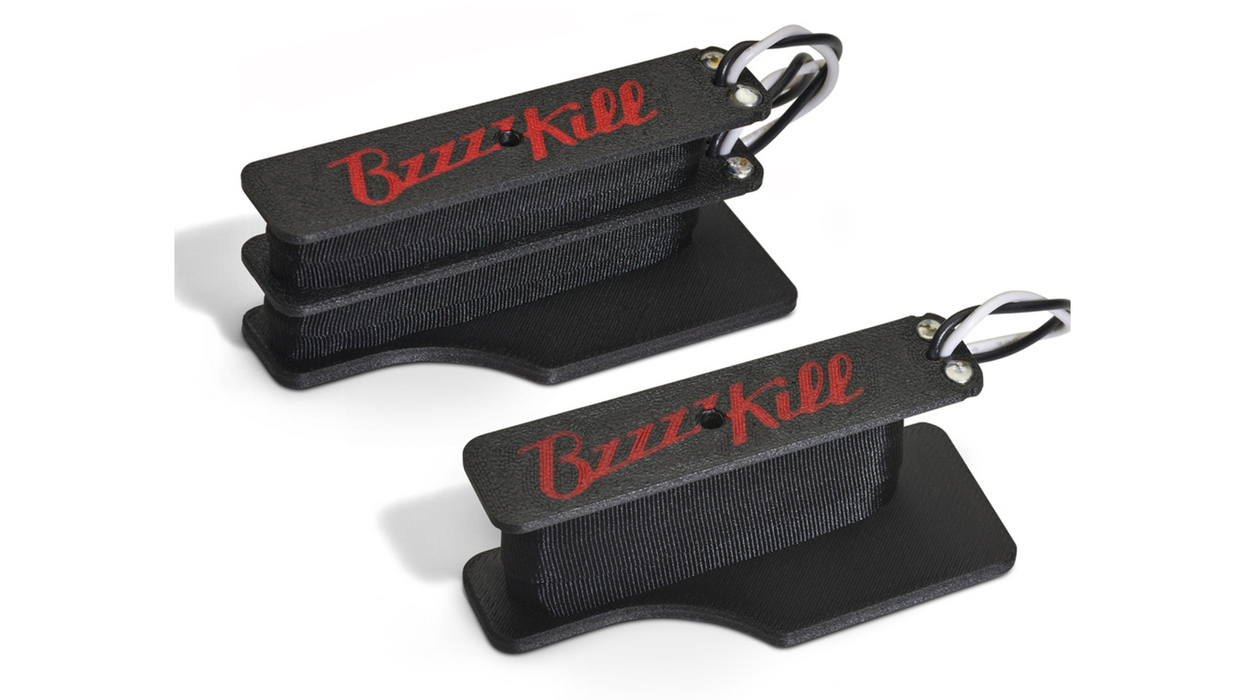I didn’t know much about compressors when I got curious about the Dan Armstrong Orange Squeezer. But I read an interview with Mike Campbell about his work on Don Henley’s “Boys of Summer,” and there, among the ingredients for his magic tone recipe (along with an Ampeg Jet and that Broadcaster), he listed an Orange Squeezer. I knew there was something haunting and magical about Campbell’s intro and solos on that song, and if an Orange Squeezer was the way, well, then, one day I would have one too. That never happened. I bought a Dyna Comp instead, and then dropped the idea of using a compressor for a long time.
DryBell’s Module 4 is a vastly expanded and more flexible take on the original Dan Armstrong Orange Squeezer. In my explorations of the pedal, I found a lot of tones that sounded and felt a lot like Campbell’s “Boys of Summer” lines. It’s clear, punchy, squishy, and even a bit pure in the way it retains a guitar’s personality. But with the significantly expanded functionality that DryBell offers in the Module 4, which include vintage Squeezer and full frequency modes, there’s much more to discover.
Semi-Silent Squeezing Sensations
It’s easy to hear why Campbell embraced the Orange Squeezer. There’s a just-right cross between retaining a guitar’s voice and adding sustain with a bit of dirt and push. And, at least as far as the studio is concerned, there may have been another incentive: the Squeezer, in relative terms, is not too noisy. Adoption by other known studio hounds seems to confirm this. Skunk Baxter used one. So, say some, did Tommy Tedesco. And according to a few experts (or myth-makers), Mark Knopfler might have used one on “Sultans of Swing.” DryBell clearly went to some lengths to replicate, and perhaps improve, on this low noise floor. Next to a few old-reliable OTA- and VCA-based compressors, the Module 4 is comparatively free of hiss, even at advanced make-up gain settings.
Set at DryBell’s suggested settings for best replicating a real Orange Squeezer (small dots mark these positions on the enclosure, a really cool and tasteful touch), the Module 4 yields compression that will feel pretty different if you’ve done long hours with a Ross-style or Boss compressor. It’s clicky and even bright, with pretty quick attack and a slightly slower release time. When you use it, you definitely feel like an effect is at work. And in Squeezer mode in particular, the Module 4 is not transparent—apart from the parts of it that are. You can still hear the guitar’s essence loud and clear. And the relatively low noise floor means transients sound out a lot more clearly. It’s also very responsive to pick attack, which is not common in most comps. For an effect that’s so bold, it’s pretty organic. It makes your ears perk up too. (Again, the Squeezer was a hit with session dogs. I, for one, am getting the hint.)
As you deviate from classic Squeezer settings, the orange mode remains compelling. Advancing the treble away from the prescribed classic Squeezer formula makes the Module 4 feel paradoxically snappy with a cool squishy attack. (Think in terms of biting into a candy with the chocolate on the inside and the delicious inner goo as a shell, and you’ll get the idea). It’s perfect for punky funk stuff. Humbuckers also benefit from the smooth leading edge and snappy core of notes. They sound smooth and responsive to a light touch, providing nice range within limited dynamics—illustrating another way the Module 4 manages to have it both ways.
While not the main attraction, the full-spectrum setting might be what sells a lot of potential customers on the Module 4. Like the orange mode, it deals in cool dualities: snappy and saggy, bright and contoured. But the full-spectrum side feels electrically alive. Slow attack and fast release settings, and the nice range in the tone control, make the Module 4 feel like it’s adding a little dynamite to most tube amps. It also sounds awesome with fuzz if you keep a close eye on the Module 4’s tone, preamp, and output settings, which, by the way, add lots of tone-shaping flexibility.
The Verdict
An Orange Squeezer-inspired compressor is a distinctly different flavor of dynamic control. If simply imitated, that shade of compression might not be for everyone, but the Module 4’s expanded functionality stretches the boundaries of what a Squeezer can be in very cool ways. If you prefer primitive compressors with few controls (and what sane player doesn’t), you should not fear the Module 4’s extra dials. They are easy to use and offer real tone-crafting power. Better still they modify an engaging, often striking basic voice that can be practical and transformative in many musical situations.





















